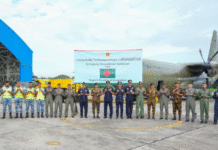
Ever since a London based agency Quacquarelli Symonds (QS) partnered with Times Higher Education to measure “academic excellence” against a host of quality indicators at the beginning of the millennium, universities all over the world have been attracted to the idea like ducks to water. Each year these agencies publish the world rankings; seeing the business potential, these two bodies have gone separate ways and kept introducing new categories of university rankings. It has not stopped universities from benchmarking one against the other though.
Universities that feature prominently in the ranking order brandish, and quite deservedly so, their badges of glory, while those in the lower order narrow the focus to highlight the region, area or subject in which they have fared better. For instance, a Bangladeshi university with NGO links tells us how it has performed in the “no poverty” category of sustainable development ranking among the South Asian countries, while keeping relatively mum on other aspects. The main parameters in which a university is judged include teaching and research, academic and employability reputation, student mobility and internationalisation, and faculty student portfolio. Most local universities struggle to excel in these given categories. Therefore, the universities who do not appear on the ranking radar follow Abraham Lincoln’s maxim: “Better to remain silent and be thought a fool than to speak and to remove all doubt.”
However, living in an era of tweets and Trumpism, it’s hard to keep silent and hide our inadequacies. Even when someone is silent, others will make sure that the scanty performance is exposed and discussed. There has been a huge uproar following the constant slide of country’s oldest university down the ranking order prepared by the QS. The University of Dhaka has slid down from the 600 bracket in 2012 to the 800-1000 bracket this year in the QS World University Ranking. Among the Asian Universities, Dhaka University ranks 134. In terms of employability, the university is ranked in the 500 bracket. Its Economics department is among the world’s top 350-400 subject wise category. The last piece of information is an encouraging sign as it goes on to show that there is something right about an individual programme, which can be emulated by others.
Then again, when we look at the incentives received by the university, compared to some self-funded self-motivated private universities, who have outperformed the University of Dhaka, there are reasons to be upset. This year Dhaka University received Tk 830.06 crore from the government’s exchequer. It has grabbed the largest share of Tk 8,485 crore allocated for 46 public universities. A total of Tk 66 crore of its budget has been earmarked for research. With such allocations given to the university, as taxpayers, we have every right to question how this university is performing compared to other world universities and how they are contributing to the knowledge economy. The university, by definition, is the centre of all knowledge-intensive activities that must prepare the human capital to contribute to national growth with the production of knowledge and technical innovation. It is a university that should set the qualitative standard for the other universities.
With more than 40 students vying for each seat, Dhaka University has the luxury of not compromising its quality. Born in 1921, the university has a huge network of alumni who are successfully placed all over the world. Most of the country’s policymakers are linked with the university. The academic and employers’ reputations of the university, which constitutes 50 percent of the marks for QS ranking, are somewhat guaranteed. The other 50 percent marks for the ranking include research and citations, internationalisation, and faculty quality and quantity. This is where the underbelly of our higher education gets exposed, particularly when it involves academic and industry-oriented research. Our poor performance in this sector drags us through the mud.
The heat map prepared by the UNDP locates Bangladesh in the red zone in higher education and research. This is alarming for a country whose economy relies on cheap labour that it employs in its garment sector or it exports overseas for its remittance. Vietnam, which is a competitor in the textile sector, has moved up in the GKI. And the African country Ethiopia is being targeted by the fashion industry as the new source of cheap labour for garments. Unless we shape up, we are in the danger of further degradation.
There is no way we can see the university ranking and GKI in isolation. The purpose of a university is directly linked to the development of a country. Development today is not measured by the bricks and mortars used in the elevated expressways or bridges. We are entering a knowledge economy where the role of the university is that of a knowledge-producing and disseminating entity. A twenty-first-century university has a new mandate of a developmental function. Countries such as Israel, Singapore, Costa Rica, Finland, or Switzerland have shown that knowledge production can provide greater economic security and standards for all in a self-serving way to ensure a healthier and more prosperous nation. Will we take it like ducks to water? Or will we reject it like goats?
Shamsad Mortuza is the Pro-Vice-Chancellor of ULAB.









